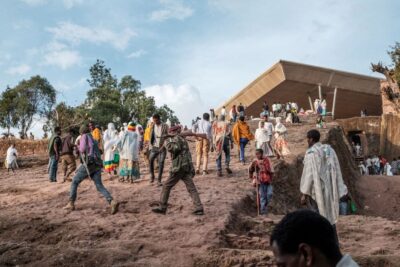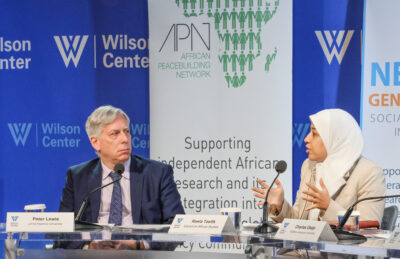Over the past several decades, large-scale hydropower projects have sparked significant debates around the world. Displacement of Indigenous peoples and environmental impacts are major sources of concern, as are the economics of dam mega-projects. The World Commission on Dams emphasized these concerns over a decade ago, and many countries and international organizations (such as the World Bank) overhauled their hydropower policies as a result. Some countries even entered a new post-dam era: the US Bureau of Engineers, a champion of building big dams in the twentieth century, has refocused on dam decommissioning and environmental restoration.
“The project’s unresolved infringement on Treaty rights, combined with the weak economics and unprecedented environmental impacts, make a strong case for canceling the project.”In Canada, recent large-scale hydropower projects have raised substantive concerns. As illustrated here by the Site C Project case, these concerns are well justified. Our research indicates that Site C is more expensive, more environmentally damaging, less greenhouse-gas friendly, and generates fewer jobs than twenty-first-century renewables such as wind power (combined with common-sense conservation). The project’s unresolved infringement on Treaty rights, combined with the weak economics and unprecedented environmental impacts, make a strong case for canceling the project. Most troubling: these issues were not properly studied in the regulatory review process due to governmental evasion of comprehensive economic and environmental assessments of Site C.
British Columbia’s Site C Project
Site C is the largest infrastructure project ever undertaken by the province of British Columbia: originally budgeted at C$8.3 billion, the project cost is now estimated at C$10 billion, with further cost overruns likely. Site C is in the early stages of construction on the Peace River in northeastern British Columbia and is designed to produce 1100 MW of capacity and 5100 GWh/year of energy, starting in 2024. Supporters of the project—notably the British Columbia Hydro and Power Authority (BC Hydro), the provincial Crown corporation developing the project—have promoted it as “clean, green energy.”
Over the past eighteen months, the University of British Columbia’s Program on Water Governance published six research reports on Site C and made six technical submissions to the British Columbia Utilities Commission (BCUC). This article summarizes some key findings from this research with the goal of contributing to the ongoing public debate on the project. We believe that our research fills an important gap because the previous provincial government exempted Site C from review by the BCUC (the utility board responsible for regulating BC Hydro). This exemption occurred despite the fact that the federal and provincial government’s own environmental Joint Review Panel recommended review by the BCUC.1Site C Joint Review Panel, Report of the Joint Review Panel: Site C Clean Energy Project BC Hydro (Ottawa – Victoria: Federal Minister of the Environment and the British Columbia Minister of Environment, May 2014), 280.
Recently, the new provincial government instigated a BCUC inquiry into Site C and asked the Commission to consider whether Site C should be halted. The results of the BCUC report, which cited our research extensively, all point in the same direction: there is a strong case for cancelling the Site C project on socio-legal, environmental, and economic grounds.2British Columbia Utilities Commission, British Columbia Utilities Commission Inquiry Respecting Site C – Project No. 1598922 – Final Report to the Government of British Columbia (Vancouver: BCUC, November 2017).
Treaty rights infringement not adequately assessed
Indigenous communities have repeatedly highlighted how Site C would severely impact Treaty rights by flooding large sections of the Peace River Valley (already extensively affected by previous hydroelectric development). However, the question of Treaty rights infringement was excluded from the mandate of the environmental review panel appointed by the provincial and federal governments, forcing the affected Treaty 8 First Nations to pursue the matter in the courts. The British Columbia Court of Appeal and the Federal Court of Appeal recently ruled that the Crown could proceed with Site C without assessing possible Treaty rights violations. This is seemingly at odds with the government’s commitment to reconciliation with Indigenous peoples, and its commitment to implement the UN Declaration of the Rights of Indigenous Peoples—which requires free, prior, and informed consent.
While these court cases were concluded this year, the underlying legal matter remains unresolved.3The application for judicial review by West Moberly and Prophet River First Nations was rejected February 2, 2017. Prophet River and West Moberly First Nations are appealing the dismissal of judicial review of permits relating to Site C. There was no resolution to the question of the infringement of Treaty rights, and both courts noted questions of infringement should be addressed in a separate standalone action. Indigenous leaders have condemned this “build first, litigate during, and compensate after” approach as failing to honor treaties, and a betrayal of the “honour of the Crown.”4Brian Slattery, “Aboriginal Rights and the Honour of the Crown,” The Supreme Court Law Review: Osgoode’s Annual Constitutional Cases Conference 29 (2005): 433. In brief: Government officials claimed Indigenous rights would be handled fairly by the regulatory process. This has not been the case. The way it has been handled belies the federal and provincial governments’ stated commitment to meaningful reconciliation with Indigenous peoples in Canada. Legal experts agree a new Supreme Court of Canada case is now likely. While there is no case currently before the courts that could end up at the Supreme Court of Canada, West Moberly and Prophet River First Nations have said they have prepared but not filed such an infringement claim,5British Columbia Utilities Commission, British Columbia Utilities Commission Inquiry Respecting Site C – Project No. 1598922 – Final Report to the Government of British Columbia, 30-31. which the BCUC considers an economic risk to the future of the Site C project.6British Columbia Utilities Commission, British Columbia Utilities Commission Inquiry Respecting Site C – Project No. 1598922 – Final Report to the Government of British Columbia, 186. This raises potential future risk of a major cost award, which has not been factored into the economic assessment of the project.
Significant environmental concerns
Our research reveals Site C will have more significant environmental impacts than any project ever approved under the Canadian Environmental Assessment Act (Table 1). This finding may seem surprising, but it arises because of the incredible biodiversity of Peace River Valley, which plays a key role in the ecology of the northeastern part of British Columbia, as well as a vital role in enabling First Nations Treaty rights to be fulfilled.
Table 1
| Projects assessed under the Canadian Environmental Assessment Act |
Number of significant environmental effects |
|---|---|
| Site C Clean Energy Project | 20 |
| New Prosperity Gold and Copper Mine Project | 5 |
| Lower Churchill Hydroelectric Generation Project | 5 |
| Jackpine [Oil sands] Mine Expansion Project | 5 |
| Pacific Northwest LNG7For details concerning the significant adverse environmental effects, see Canadian Environmental Assessment Agency, Pacific Northwest LNG Project: Environmental Assessment Report (Ottawa: Canadian Environmental Assessment Agency, September 2016), 189. | 3 |
| Encana Shallow Gas Infill Development Project | 2 |
| Cheviot Coal Project | 2 |
| Kemess North | 2 |
| Northern Gateway Project | 1 |
| White Pines Quarry | 1 |
| LNG Canada | 1 |
| Labrador-Island Transmission Link | 1 |
There are also likely to be environmental impacts downstream, including on the Peace-Athabasca Delta (located largely inside Wood Buffalo National Park), which is the largest inland freshwater delta in North America, of tremendous significance for a range of wildlife (including migrating birds), and a UNESCO World Heritage Site. This environmental threat led UNESCO to note in a 2017 recent review that it intended to designate the Delta as a World Heritage Site in Danger, unless certain steps are taken—including a detailed review of the potential impacts of Site C on the Delta.8World Heritage Centre and IUCN, Report of the joint WHC/IUCN Reactive Monitoring Mission to Wood Buffalo National Park, Canada (Paris: UNESCO, March 2017).
The Site C construction and reservoir will also generate greenhouse gas emissions, estimated by BC Hydro between 5 and 7 million metric tons over the first thirty years of operations (equivalent to adding some 50,000 cars to BC roads over that period). In fact, our research shows Site C’s emissions would actually exceed those from a lower-cost alternative portfolio of additional energy conservation, wind, and natural gas operated to meet only winter-peak requirements.9Specifically, our research found that an alternative portfolio of resources consisting of additional conservation, wind, and natural gas would produce about 1.16MT CO2e emissions over 30 years, or 3.9 MT CO2e emissions over 100 years. Conversely, the Site C Project would produce 5 MT of CO2e emissions over 30 years, and 6 MT of CO2e emissions over 100 years.
Weak economics
Our research indicates, and the BC Utilities Commission report confirms, that the economic case for Site C is weak. Since Site C was approved, BC Hydro’s forecast of future electricity demand has dropped substantially. Based on their reference scenario, the electricity produced by Site C will be 100 percent surplus upon commissioning and not fully required for at least a decade. Obviously, this date will be much later if demand growth is lower than forecast. Given BC Hydro’s consistent pattern of overestimating future demand, the BCUC indicated that demand is likely to be lower than predicted by BC Hydro.
Site C is poised to generate a surplus long-term. This surplus will be exported into markets where, due to low natural gas prices and technological innovation, electricity prices are far below the cost of production from Site C. As a result, the surplus will be sold at a loss. The BCUC confirmed that Site C electricity would have to be exported at a significant loss, given that the cost of production is currently approximately three times higher than the export market price. We estimate the cumulative value of these losses at C$930 million, using BC Hydro’s forecast reference scenario, or over C$2 billion, using a low-demand scenario.
Site C is also more expensive than other renewables. Our research found that an alternative plan—combining wind energy and inexpensive energy conservation—would be hundreds of millions of dollars, perhaps even billions of dollars, less expensive. Based on available information and model assumptions, cancelling Site C is preferable to completion.10Wind energy costs, which formed a substantial portion of BC Hydro’s alternative plan to developing Site C, have declined more than 20 percent since 2012. Taking into account the sunk costs and our best estimate of cancellation costs related to the Site C Project construction to date, cancelling the Site C Project would save ratepayers between C$500 million and C$1.65 billion. The BCUC’s report, supported by an independent review by Deloitte, is aligned with our findings.
“Our analysis indicates that Site C provides the least number of jobs.”Site C also generates fewer jobs than the alternatives. Our most recent report analyzed the number of jobs Site C would provide versus the alternative portfolios (which entail significant amounts of energy conservation, as well as alternative energy sources such as wind and geothermal) put forward by BC Hydro and the BCUC. Our analysis indicates that Site C provides the least number of jobs. Pursuing an alternate path would allow many more long-term sustainable jobs to be generated in the Peace Valley region. There would also be no net loss of jobs: Remediation of the site would absorb the current Site C workers for two years, after which workers could be transitioned to energy conservation (which generates 30 jobs per $1 million spent, and provides electricity at only a third the cost of Site C). We estimated the jobs at 2,400 per year. Longer-term, the installation of new alternative energy facilities (notably wind in the Peace River region, which is the most promising region in British Columbia for wind power) would create an even higher number of jobs.
Regulatory process: Systemic shortcomings
Our research also points to systemic shortcomings in the regulatory process for Site C: a failure to consider the evolving framework of Indigenous rights and an overly constrained environmental assessment process.
Failure to consider Indigenous rights
As outlined above, the current legal regime in Canada provides insufficient safeguards for ensuring water security for Indigenous peoples, and as a result, conflict continues to grow. Recently, Assembly of First Nations National Chief Perry Bellegarde toured the proposed Site C Project site at the invitation of West Moberly and other local First Nations communities. Yet, BC is not an isolated case. In Alberta, for example, conflict over water allocations to First Nation’s reserves is intensifying.11See, for example, a recent Globe and Mail article on looming confrontation over water for reserves in Alberta, “Fluid Situation for Alberta Reserves.”
Underpinning these disputes are two different worldviews. At the risk of oversimplification: whereas Western law frames water as a resource available for human exploitation, Indigenous laws frame water as an animate (living) entity that, like other elements of nature, is rights-bearing, imbued with sociocultural and spiritual meaning, and interrelated with all aspects of the environment.12 University of Toronto Press, 2010More Info → However, there remains optimism that there are ways to navigate and negotiate these differing and arguably incommensurate understandings. Many Indigenous communities welcome recent language by the federal government that characterizes these sorts of negotiations as nation-to-nation and respects Indigenous relations to water.13In July of 2017, the federal government released ten “Principles Respecting the Government of Canada’s Relationship with Indigenous Peoples.” Principle Five states: “The Government of Canada recognizes that treaties, agreements, and other constructive arrangements between Indigenous peoples and the Crown have been and are intended to be acts of reconciliation based on mutual recognition and respect.” Expectations are high in First Nations communities that proper processes will be deployed to honor the spirit and intent of treaty arrangements. But, the provincial and federal governments’ decision to proceed with Site C despite ongoing court cases have not met these expectations.
University of Toronto Press, 2010More Info → However, there remains optimism that there are ways to navigate and negotiate these differing and arguably incommensurate understandings. Many Indigenous communities welcome recent language by the federal government that characterizes these sorts of negotiations as nation-to-nation and respects Indigenous relations to water.13In July of 2017, the federal government released ten “Principles Respecting the Government of Canada’s Relationship with Indigenous Peoples.” Principle Five states: “The Government of Canada recognizes that treaties, agreements, and other constructive arrangements between Indigenous peoples and the Crown have been and are intended to be acts of reconciliation based on mutual recognition and respect.” Expectations are high in First Nations communities that proper processes will be deployed to honor the spirit and intent of treaty arrangements. But, the provincial and federal governments’ decision to proceed with Site C despite ongoing court cases have not met these expectations.
While these legal and political struggles unfold, some Indigenous communities have taken the initiative to develop their own policies for resource governance.14For example, the Tsilhqot’in Nation’s 2014 Mining Policy and the Kaska Nation’s 2015 Resource Law governing resource extractive activity in their respective traditional territories; and the 2016 Yinka Dene ‘Uza’hné Surface Water Management Policy and Yinka Dene ‘Uza’hné Guide to Surface Water Quality Standards. A related trend has been toward increased involvement of Indigenous peoples in collaborative water governance, in line with broader trends of community participation in decision-making at the watershed scale, notably via the Northwest Territories Water Stewardship Strategy.15An overview of the NWT Water Stewardship Strategy and details concerning the second five-year action plan can be found on the NWT government website. This parallels calls by industry for new approaches to resource management.
These developments and initiatives are characterized by shared recognition that current approaches to consultation are unsatisfactory. These mechanisms, meanwhile, are likely to undergo significant transformation in the near future, given the federal government’s ongoing commitments to overhauling its environmental assessment processes and to implementing the UN Declaration on the Rights of Indigenous Peoples. In the background to all this activity, reconciliation with Indigenous peoples has been a top priority in Ministerial mandates.
To effectively ignore First Nation’s concerns and push ahead with an economically flawed and environmentally damaging hydroelectric project is an unwise move. In the particular context of the Site C Project, while Treaty rights and responsibilities are equally shared by both sides, one party seems intent on forcing the other into costly and time-consuming litigation. As Canadian courts have pressed for decades, these sorts of contentious matters are best worked out in good-faith negotiations. Hitting “pause” would have provided the federal Department of Justice with an opportunity to conduct a full assessment of the project’s effects on constitutionally protected Treaty rights and for the Treaty parties to find consensus-based solutions.
Constrained environmental assessment
In May 2011, the Site C Project triggered an environmental assessment under the former 1992 Canadian Environmental Assessment Act, which was superseded by the 2012 Canadian Environmental Assessment Act (CEAA 2012). The Site C Project was also reviewable under the British Columbia Environmental Assessment Act.
In February 2012, the federal and provincial Ministers of Environment finalized an agreement to conduct a cooperative environmental assessment, including the establishment of a joint review panel (JRP). The Panel Agreement imposed several time and resource constraints on the work of the three-person JRP, including in relation to the review of over 27,000 pages of technical documentation and the review deadline. While it is not unusual for environmental assessments to include large volumes of material, it is unusual for a review of a large-scale hydroelectric project by an independent panel to occur over a nine-month period.16The four-person Clean Environment Commission reviewing Manitoba’s 695 NM Keeyask Hydroelectric Project was provided a total of 18 months and the five-member Utilities Board was provided 14 months. The Lower Churchill Hydroelectric Generation Project in Labrador was reviewed by a five-person environmental assessment panel over 32 months, followed by a review over a nine-month period by the four-person Newfoundland and Labrador Utilities Board.
The implications of the JRP’s time and resource constraints are evident in the Panel’s findings related to Site C’s cost—a central consideration in evaluating it relative to the available alternatives—a key mandate and responsibility of the JRP in the EIS Guidelines:
The Panel cannot conclude on the likely accuracy of Project cost estimates because it does not have the information, time, or resources. This affects all further calculations of unit costs, revenue requirements, and rates. 17Site C Joint Review Panel, Report of the Joint Review Panel: Site C Clean Energy Project BC Hydro, 280.
Another implication concerns the findings of the JRP regarding the relative greenhouse gas emissions of the Site C Project compared to the alternatives. Due to time constraints, the Panel dedicated one afternoon session to atmospheric issues, of which greenhouse house gases was one of five subtopics in a four-hour hearing. No evidence concerning greenhouse gas emissions was presented to the Panel during the hearing, other than by BC Hydro.
“Future environmental reviews should be properly resourced in order to ensure that the full facts and analysis can be made available to decision-makers.”The decision to impose significant constraints on the environmental review created a situation in which a comprehensive analysis of the relevant facts could not be provided. The JRP did an admirable job under different circumstances. However, future environmental reviews should be properly resourced in order to ensure that the full facts and analysis can be made available to decision-makers.
Looking ahead: The role of hydropower in Canada’s energy future
The provincial government will render its decision on Site C in the coming weeks. In our opinion, the research points in a clear direction: cancellation of the Site C project makes sense on economic, jobs, environmental, and social grounds. Specifically, our research indicates Site C is more expensive, more environmentally damaging, less greenhouse-gas friendly, and generates fewer jobs than twenty-first-century renewables such as wind power (combined with common-sense conservation). The project’s unresolved infringement on Treaty rights, combined with the weak economics and unprecedented environmental impacts, make a strong case for its cancellation.
Regardless of the outcome, the case of Site C raises broader issues, which our assessment highlights: infringement on First Nations’ Treaty rights, significant adverse environmental effects, a weak business case, and a constrained regulatory process that did not address many of the key issues at stake. Similar concerns have been raised with respect to the other two major hydropower projects currently under construction in Canada: Keeyask in Manitoba and Muskrat Falls in Labrador.
In turn, this raises the question of hydropower’s role in Canada’s energy future. Our research provides a strong basis for sustained analysis and debate on the need to overhaul regulatory processes for hydropower projects at both provincial and federal levels; and on the comparative merits of other renewables versus hydropower (including small-scale hydropower, such as pumped storage). Canada needs to give future hydropower projects a more thorough, comprehensive analysis than they received in the past. And, we urgently need to implement the new, innovative options—such as wind power—that are more appropriate to Canada’s twenty-first-century energy needs in a carbon-constrained world.
Banner photo credit: Jason Woodhead/Flickr













